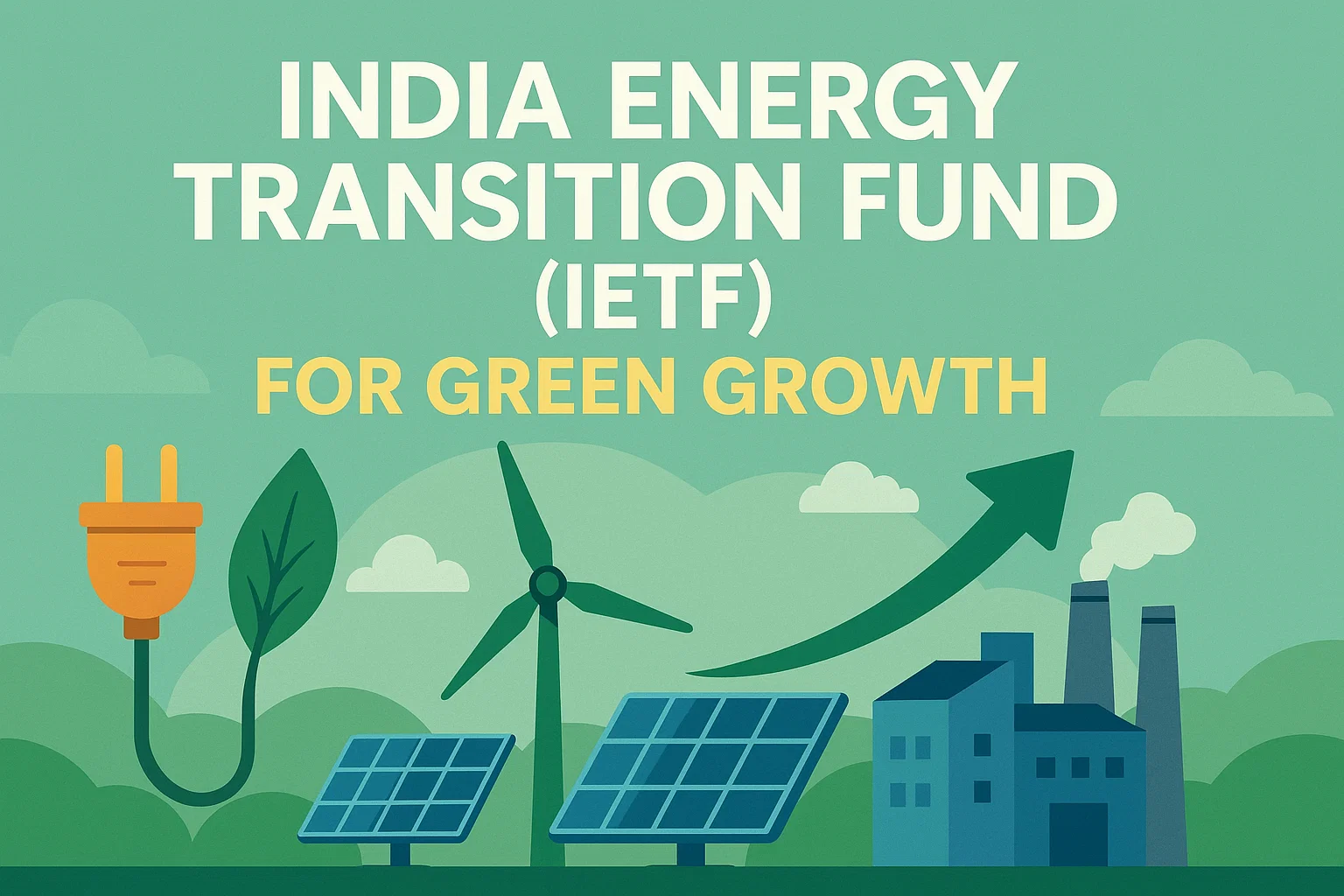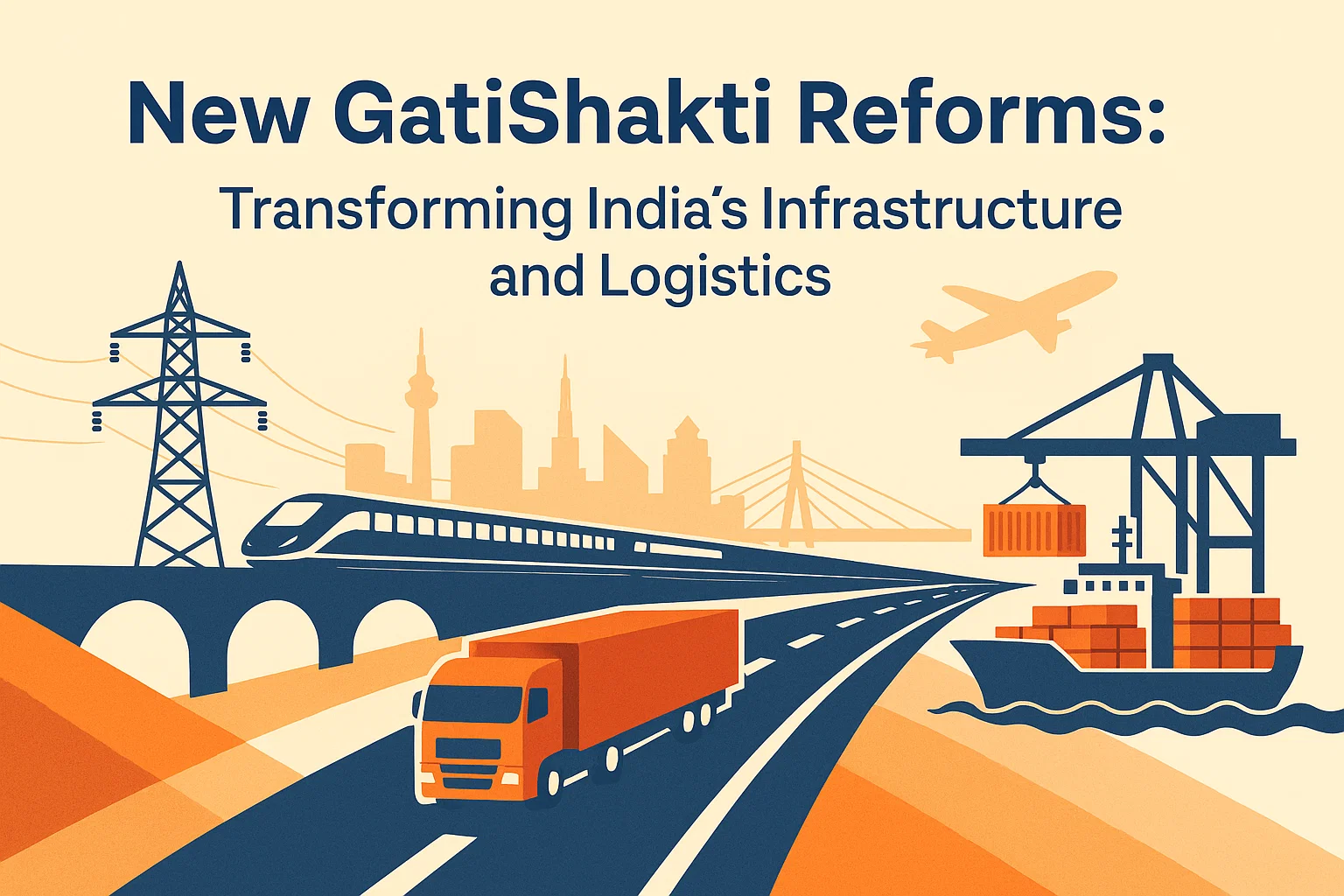Font size:
Print
Urban Growth and Water Risk in India
India’s Urban Growth Undermines Climate Resilience
Context: Urban real estate development has long been a key driver of India’s economic growth. However, the unchecked expansion of cities into floodplains, wetlands, and ecologically fragile zones is pushing their long-term sustainability to the brink.
More on News
- Over US$ 300 million was spent on flood mitigation in just two years, and yet flooding, groundwater depletion, and unequal access to water remain structural urban challenges—not isolated incidents.
- As climate change intensifies, India’s cities must realign infrastructure, land use, and environmental regulation with ground realities.
Vertical Expansion and Water Stress in Urban India
- High-rise Construction: India’s urban growth is increasingly dominated by high-rise construction, especially in premium zones driven by private capital rather than municipal planning.
- Lack of Standards: Unfortunately, these skyscrapers often rise in areas lacking proper hydrological mapping or infrastructure planning.
- Many are built on low-lying land, reclaimed wetlands, or close to natural water bodies—exacerbating flood risks and water scarcity.
- Take Mumbai’s Bandra-Kurla Complex (BKC)—its 600-acre land reclamation is linked to Mithi River overflow and flooding.
- In Bengaluru, over 79% of water bodies were lost between 1973 and 2016, mostly to urban sprawl.
- Chennai’s Pallikaranai marshlands were sacrificed for IT parks and high-rises, obstructing natural drainage.
Flooding in Indian Cities: A Planning and Drainage Crisis
- Land Use: Frequent urban flooding in cities like Mumbai, Bengaluru, and Chennai is less about rainfall volume and more about how land is used and drained.
- Drainage: Urban drainage systems often divert water from elite neighborhoods into low-income areas situated near old lakebeds or canals.
- For instance, Chennai’s 2023 floods hit commercial zones like T Nagar and Sholinganallur, where construction over old lakes caused buried water bodies to resurface.
- Loose Permissions: Despite regulations, planning permissions are routinely granted within 15 meters of water bodies, making flood impact worse.
- While upscale communities may endure waterlogging, informal settlements suffer displacements, sewage exposure, and prolonged recovery, effectively turning poverty into a flood risk multiplier.
Water Access: Urban Inequality and Groundwater Depletion
- Dual Water Regime: Formal sectors enjoy piped water, borewells, and tanker services, while the urban poor depend on irregular water deliveries, handpumps, or contaminated sources.
- This has created an “urban water apartheid”, where high-rises deplete aquifers far beyond city limits, while informal areas struggle for basic access.
- Uneven Implementation: Chennai, despite mandating rainwater harvesting, suffers from uneven implementation.
- Tanker support reaches elite areas first, while low-income communities face hours-long waits.
- Groundwater: India remains the world’s largest user of groundwater, with cities making a disproportionate impact—often without adequate recharge or conservation measures.
Climate Displacement in Urban India
- Climate-linked disasters now displace over 3.6 million people annually in India.
- While this once affected mostly rural and coastal areas, urban displacement is on the rise.
- In 2023, parts of Koramangala and Whitefield—two high-end Bengaluru neighborhoods—were under water for days.
- Meanwhile, low-income households in Chennai’s flood-prone areas were moved—not to safer grounds, but to equally vulnerable zones lacking basic services.
Governance Failures and Infrastructure Gaps
-
- Poor Coordination: Urban planning in India suffers from poor inter-agency coordination.
- Departments for water, housing, environment, and construction often operate in silos, leading to fragmented outcomes.
- In Chennai, the absence of an integrated urban water management system has caused inefficiencies and ecological damage.
- Infrastructure: Infrastructure like drainage is designed without topographical sensitivity, affecting low-lying informal areas the most.
- In Gurugram, construction over Aravalli aquifer recharge zones worsens water scarcity.
- Environmental assessments are often ignored, and city records frequently “unmap” lakes and tanks, easing their encroachment.
- Poor Coordination: Urban planning in India suffers from poor inter-agency coordination.
- Outdated Drainage: Chennai’s systems serve a population three times larger than originally planned.
-
- In Guwahati, untreated drainage flows directly into wetlands.
- Green infrastructure, like permeable pavements or rain gardens, is largely symbolic, rarely integrated meaningfully.
Building Water-Sensitive and Climate-Resilient Cities
- Prioritise Nature-Based Solutions: Wetland restoration, urban tree cover, and natural drainage preservation must become central to city planning. These green buffers reduce flood and heat risks.
- Adopt the Sponge City Model: Cities like Chennai, Kochi, and several in Assam are exploring sponge city plans—green corridors, permeable surfaces, and rain gardens that absorb, store, and reuse rainwater instead of draining it out rapidly.
- Mandate Climate Risk Disclosures for New Projects: Developers should publicly disclose potential risks related to flooding, heatwaves, and water availability before receiving project clearances.
- Reform Zoning and Land-Use Regulations: Planning must align with ecological functions, not just real estate demand. Floodplains, recharge zones, and natural waterways should be no-build areas.
- Strengthen Urban Infrastructure and Data Systems: Most Indian cities lack real-time hydrological data, early warning systems, and comprehensive flood-risk maps. These tools are critical for disaster response and urban resilience.
- Green Building Norms and Groundwater Protection: Building codes must require permeable surfaces, passive cooling, and rainwater harvesting. High-risk zones should have strict infrastructure thresholds before new construction is allowed.
- Link Finance to Environmental Risk: Housing loans and insurance premiums should reflect climate and water risks, discouraging unsustainable development in ecologically sensitive areas.


